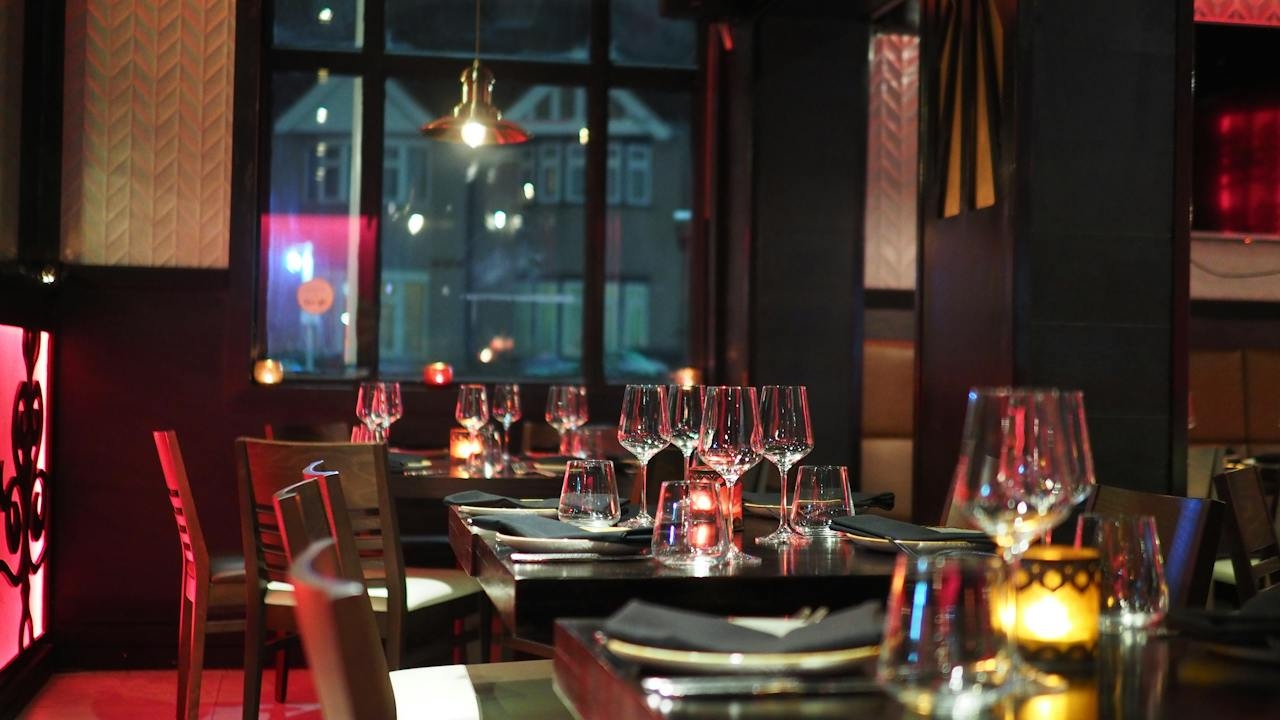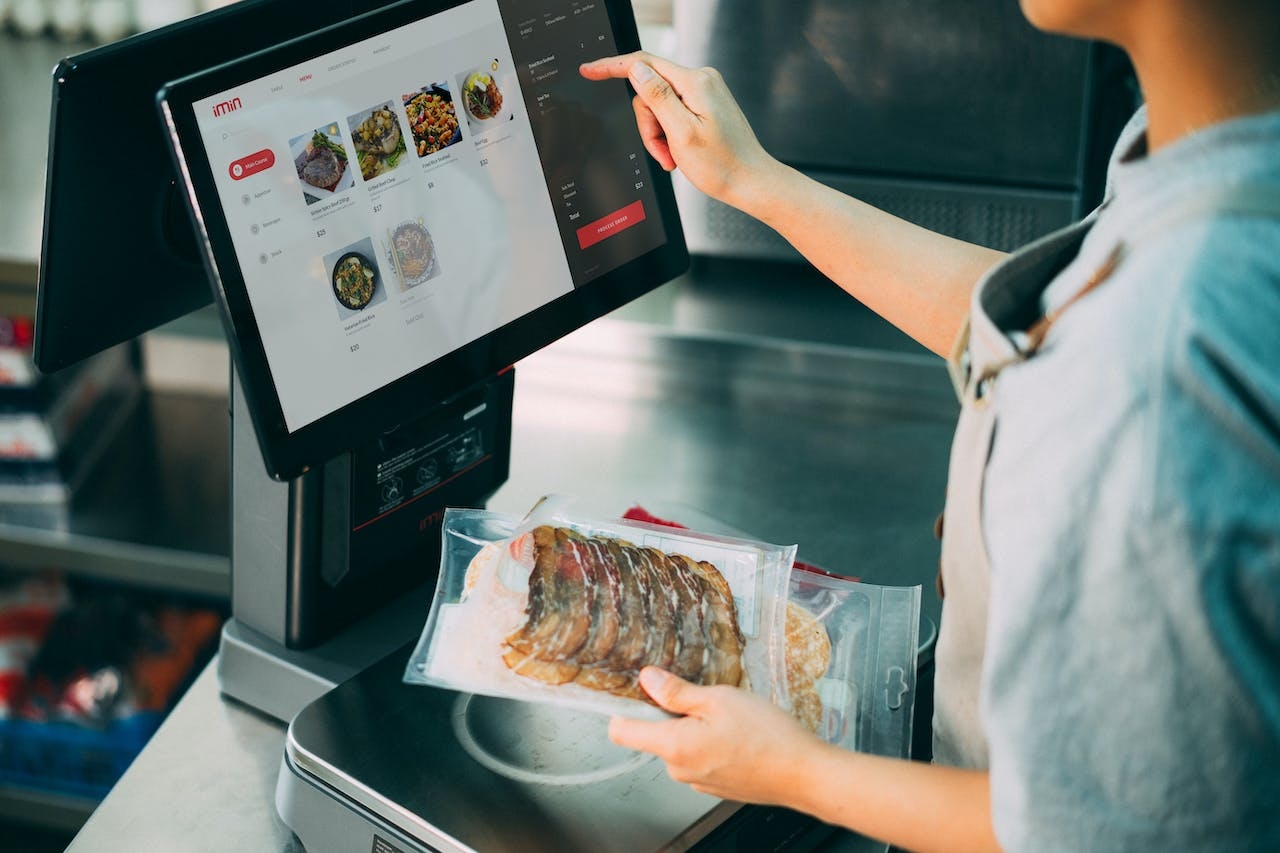Enhancing Your Dining Experience: The Benefits of a Full Service Restaurant
By Nikita Nielsen · 4. March 2024
What exactly is a full service restaurant?
It’s a place where every meal is an experience, conceived through careful attention to detail, personalised care from the staff, and a diverse menu in a setting designed for your enjoyment.
In this guide, we’ll explore what makes full service restaurants a preferred choice👍 for those looking to elevate their dining beyond the ordinary.
Key Takeaways
- Full-service restaurants focus on providing a unique dining journey with personalised table service, diverse menus, and an inviting ambiance, exceeding the offerings of quick-service establishments.
- Operational efficiency in full-service restaurants is crucial, involving a synchronised kitchen and front-of-house team, and the incorporation of technology to streamline processes and enhance the customer experience.
- Sustainability is a growing trend in the restaurant industry with full-service establishments adopting farm-to-table practices and reducing their carbon footprint to meet consumer demand for environmentally responsible dining.
Exploring the Essence of Full Service Restaurants
 full service restaurant
full service restaurant
A full-service restaurant is more than just a place to eat; it is a venue that offers a comprehensive culinary journey, marked by personalised table service, diverse menus, and a captivating ambiance.
Understanding what a full-service restaurant means is essential to appreciate the level of dedication and effort put into creating such an exceptional experience.
Unlike limited service restaurants, where the focus primarily lies on quick service and convenience, full-service establishments serve as a canvas for culinary artistry.
Here, each dish is an exhibition of creativity and craft, prepared with finesse and served with grace.
The Art of Table Service
Unfolding the art of table service, full-service restaurants go beyond merely serving food. They meticulously curate experiences for their guests.
Right from their seating, the dedicated waitstaff attend to guests with personalised attention, leaving no stone unturned to make their dining experience impeccable.
The waitstaff tailor the dining experience for each guest. Their roles extend from suggesting popular dishes and answering menu questions to offering a warm and welcoming service, all of which contribute to a memorable dining experience.
A Diverse Culinary Journey
The extensive and diverse menu is a defining characteristic of full-service restaurants.
With a wide array of options spanning lunch and dinner menus to comprehensive full course meals, these establishments cater to a broad spectrum of tastes and preferences.
Consider a restaurant that offers an array of dishes inspired by traditional Italian cuisine, including:
- A variety of pasta dishes🍝, each with a unique twist
- Stone-baked pizzas topped with fresh, gourmet ingredients
- Freshly prepared seafood dishes, reflecting the catch of the day
- A selection of salads, from classic greens to inventive new combinations
- Hearty and comforting soups, perfect for any season
This selection not only caters to a range of palates but also brings an element of sophistication and accessibility to the dining experience.
The Ambiance Factor
 Restaurant
Restaurant
Integral to the dining experience is the ambiance of a full-service restaurant. The decor, including colour schemes, materials, and artwork, greatly influences it, reflecting the establishment’s style and setting the atmosphere.
The ambiance is further enhanced by thoughtful lighting and comfortable seating arrangements. Music selection plays an equally crucial role, setting the tone for the dining experience and complementing the overall mood.
The Anatomy of Full Service Dining

restaurant chefs
Behind the scenes of a full-service restaurant is a complex web of operations, all working together to ensure a flawless dining experience.
From the bustling kitchen to the front-of-house service, every aspect plays a pivotal role in the overall functioning of the restaurant and contributes to the dynamics of the restaurant industry.
Be it the expediter ensuring that every dish meets the restaurant’s standards before it leaves the kitchen, or the bartender remembering a regular patron’s favourite drink, each role contributes to the harmonious functioning of a full-service restaurant.
Kitchen Operations: Cooking Up Quality Meals
The kitchen, the heart of a full-service restaurant, is more than a mere food preparation zone. It thrives as a well-coordinated operation focused on delivering quality meals.
This culinary haven is meticulously organised into functional areas, including a prep area, dish room, dry storage, and a main cooking line equipped with walk-in coolers or freezers.
A professional kitchen operates under a hierarchy known as ‘brigade de cuisine’, which includes various roles such as Chef de Cuisine, Sous Chef, Chef de Partie, Commis Chef, and support staff like Plongeur/Marmiton (Kitchen Porter) and Escuelerie (Dishwasher).
Front of House Excellence
 smiling waitress
smiling waitress
While the kitchen forms the heart of a full-service restaurant, the front-of-house is the face of the establishment.
It is where the guests are served and where they form their impressions of the restaurant.
From the hosts who greet the guests and manage reservations to the waitstaff who take orders and ensure health standards, each role in the front of the house contributes to the overall guest experience.
Bartenders, in particular, play an important role in creating a welcoming atmosphere and crafting a wide array of drinks.
Key skills for front of house staff include a deep understanding of the menu, the ability to give personalised recommendations, and proficiency in maintaining poise in fast-paced environments.
Mixology and Beverage Services
Serving a diverse range of beverages, including wine, beer, and cocktails, the vibrant bar corner of a full-service restaurant complements the food served, thereby enhancing the dining experience.
Mixologists, with their expert skills and creative flair, craft a wide array of drinks, from timeless classics to imaginative mixes.
The bar area is designed for swift beverage service, integrating seamlessly with the kitchen’s workflow to cater to diners’ needs promptly.
Casual vs. Fine Dining Establishments
Despite all full-service restaurants aiming for an exceptional dining experience, casual and fine dining establishments clearly differ. The distinction primarily lies in their service levels, ambiance, and menu offerings.
Casual dining offers a more relaxed environment, with moderately priced menus, making it an ideal choice for those seeking a laid-back dining experience.
On the other hand, fine dining provides an upscale experience marked by premium service and often more selective, high-quality menu options.
Relaxed Vibes at Casual Dining Spots
Casual dining restaurants, also known as casual restaurants, are designed to offer an easy-going and welcoming environment.
These establishments, including fast casual restaurants, are ideal for patrons looking for quality meals without formalities, making them a popular choice for family dinners, friendly gatherings, and casual outings.
With accommodating service styles such as buffet options or table service, and a variety of familiar fare on the menu, including fast food, sit down restaurants offer casual dining in a friendly and laid-back atmosphere.
Exclusivity at Fine Dining Venues
Fine dining venues, on the other hand, provide an exclusive, upscale experience. From the moment you step foot into a fine dining restaurant, you are transported to a realm of luxury and elegance.
These establishments offer premium service, with qualified front-of-house personnel ensuring a superior dining experience.
Menus in fine dining venues are chef-curated, featuring more expensive and refined selections, exemplifying the exclusivity beyond the usual fare of casual dining.
The Business Side of Full Service Dining
Running a full-service restaurant, like any business, presents its unique set of challenges and opportunities.
The business aspect of full-service dining, from managing operational complexities to capturing market share in a fiercely competitive industry, is as intricate as its culinary counterpart.
However, despite these challenges, full-service restaurants that quickly adapt to market changes and employ efficient demand forecasting are better prepared to maintain relevance and customer loyalty in the face of competition from quick service restaurants and fast food restaurants.
Navigating Operational Challenges
Any restaurant operation involves several moving parts, and full-service restaurants are no exception.
Managing inventory, staff, and complying with legal regulations are just a few of the operational challenges these establishments face.
However, with careful planning and the right tools, these challenges can be navigated successfully. Some strategies to consider include:
- Demand forecasting, which helps maintain appropriate stock levels, preventing lost revenue due to over-ordering or food waste
- Implementing a startup/shutdown schedule for kitchen equipment to minimise energy use during idle times
- Optimising appliance layout for efficiency
By implementing these strategies, you can overcome the challenges and run a successful operation.
Capturing Market Share in a Competitive Industry
In the competitive world of full-service dining, capturing market share requires a deep understanding of consumer preferences, the ability to adapt to market changes, and the smart use of technology.
Comprehensive market analysis, consistently delivering high-quality food and customer service, and utilising social media and online marketing are just a few strategies that full-service restaurants use to enhance visibility and deliver a personalised guest experience.
Technology’s Role in Modern Full Service Restaurants
In the digital age, technology asserts itself as an indispensable tool across all industries, including full-service dining.
As it streamlines operations and enhances guest experiences, technology significantly influences modern full-service restaurants.
Automated booking services, electronic POS systems, and AI tools not only improve efficiency but also aid in data collection, helping restaurants to stay competitive in the ever-evolving industry.
Innovations in Order & Payment Processing
 restaurant payment system
restaurant payment system
One of the key areas where technology has made a significant impact is in order and payment processing.
Modern POS systems support various contactless payment methods, such as mobile pay via QR codes and text messages, enhancing efficiency and accuracy.
These systems also offer features like automatic tax calculation and bill-splitting, reducing the manual efforts and potential errors, thereby improving the overall guest experience.
Enhancing Guest Experience with Tech
Technology is not just about improving operations; it also plays a pivotal role in enhancing the guest experience.
Interactive dining options, personalised service, and innovative dining concepts supported by technology are all aimed at providing a more enjoyable and immersive dining experience.
For instance, touchscreen POS terminals and tablets at tables are streamlining the ordering and payment process, leading to faster service times and reduced wait times.
Similarly, personalization of dining experiences is being achieved through the use of technology that factors in guest preferences and history.
Sustainability: A New Menu Item
With its growing prominence in recent years, sustainability has emerged as a crucial factor shaping the course of full-service dining.
It influences menu options and addresses consumer preferences for health-conscious choices, thus playing a pivotal role in the evolution of full-service restaurants.
The increasing focus on local sourcing, eco-friendly🌱 practices, and reducing carbon footprint is not just about being environmentally conscious; it’s also about providing fresher, more flavorful food options and supporting local economies.
Farm to Table: The Local Food Movement
The farm-to-table movement, which emphasises locally sourced ingredients, has been embraced by full-service restaurants.
This practice reduces carbon emissions by decreasing the distance food travels from production to consumption, thereby lowering the need for extensive processing and packaging.
Moreover, locally sourced foods often provide superior freshness, flavour, and nutritional content due to being harvested at their peak and undergoing minimal transit and processing time.
In addition, diverse local food systems aid in the preservation of biodiversity, protecting various plant and animal species, which serves as a safeguard for the global food supply.
Reducing Carbon Footprint
In a bid to reduce their carbon footprint, full-service restaurants are implementing a range of measures.
This includes energy-saving🔋 practices, engaging in trade initiatives, and water conservation methods.
These steps not only contribute to a more sustainable environment but also lead to significant cost savings for the restaurants.
Summary
As we’ve traversed the world of full-service dining, we’ve discovered the artistry behind table service, the meticulous planning that goes into kitchen operations, and the role of technology in enhancing guest experiences.
We’ve also explored how full-service restaurants are adapting to changes in the market and customer preferences, and how sustainability is becoming a critical consideration in their operations.
The world of full-service dining is ever-evolving, offering us not just a meal, but an immersive culinary journey!
Frequently Asked Questions
What characterises a full service restaurant and a quick service restaurant?
A full service restaurant typically involves food being served to the guests at their table, with payment being collected after they are done eating. On the other hand, a quick service restaurant involves food being served across the counter, with payment collected in advance.
What is the difference between full service and casual restaurants?
The main difference between a full service restaurant and a casual dining restaurant is that the former offers table service, while the latter does not. The average check size in a casual dining restaurant is typically double that of a fast casual concept.
What is the role of technology in full-service restaurants?
Technology in full-service restaurants plays a vital role in streamlining operations, enhancing efficiency, and improving the guest experience through interactive dining options and personalised service. It also improves accuracy in order and payment processing.

